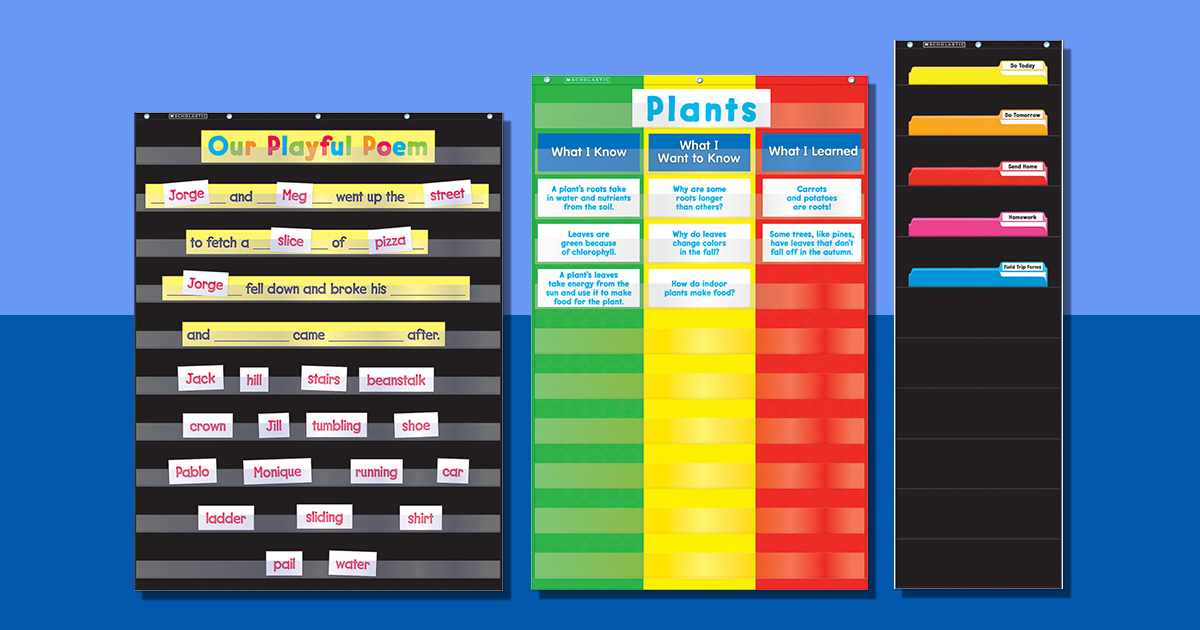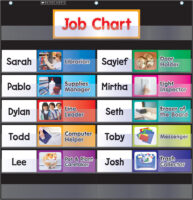3 Savvy Teacher Tips for Using Schedule Pocket Charts
These charts will keep your classroom organized and running smoothly.
Pocket charts help students on every grade level keep track of their days. When students have a quick way to visualize what their daily tasks are, their productivity goes up, which lets them celebrate small daily victories.
Whether you’re using a monthly calendar pocket chart, a daily schedule chart, or a classroom jobs chart, pocket charts give your students the extra guidance and motivation they may need to get through busy school days. Plus, they’re all under $20, making them a great option for budget-savvy teachers.
Brian Smith, a kindergarten teacher in North Carolina, uses pocket charts to help his students get a better sense of what their days look like and what their classroom jobs are. This way, his students know what to expect and can find answers readily to some of their most urgent questions.
Here are some of Smith’s tips for optimizing these classroom essentials.
1. Establish a Routine
Pocket charts allow your students to visualize a variety of routines and keep track of the daily schedule.
“In the younger classrooms, pocket charts are great because they allow you to use pictures,” says Smith. “It answers questions like, ‘What center am I going to today?’ and ‘What station am I going to next?’ Some kids really struggle with what is happening next, no matter how structured or routine you make your day.”
Everyday classroom disruptions are inevitable (think: a last-minute meeting, getting called, or class pictures in the middle of a lesson), but pocket charts give your students a point of reference when confusion might arise.
2. Be Consistent
Consistency is key when it comes to managing a classroom, and pocket charts help your students stick to routines by providing structure to their days. For example, you can use a pocket chart to set lunch times, recess, and independent reading time.
“I love a schedule pocket chart for this,” says Smith. “It really helps keep the kids on track for the day. Referring them to the posted schedule pocket chart that has approximate times listed beside whatever is going to happen at that point or a picture of something that represents the activity gives them the consistency they need.”
3. Get Creative
Whether you need to update a schedule or a jobs chart, the sky's the limit for these pocket charts and their uses.
For example, you can utilize an art lesson for students to decorate their own name cards or assign different days of the month in a calendar chart to students to decorate. One chart can be used to create a schedule of fun projects your class will do that day or week, or showcase a list of books your class will be reading this month, akin to a menu.
You can even use pocket charts to promote literacy! For instance, this handy Pocket Chart Book helps you set up charts using poems, recipes, and math story problems.
However you choose to utilize them, pocket charts are very effective.
“The kids are much more productive because they really help with the transitions,” Smith says. “To have something in writing or pictures of where they need to be is something that the kids refer to frequently. They respond to the schedule chart quickly every year because that's how they are introduced to the schedule.”
Shop best-selling pocket charts for your classroom below! You can find all books and activities at The Teacher Store.


















